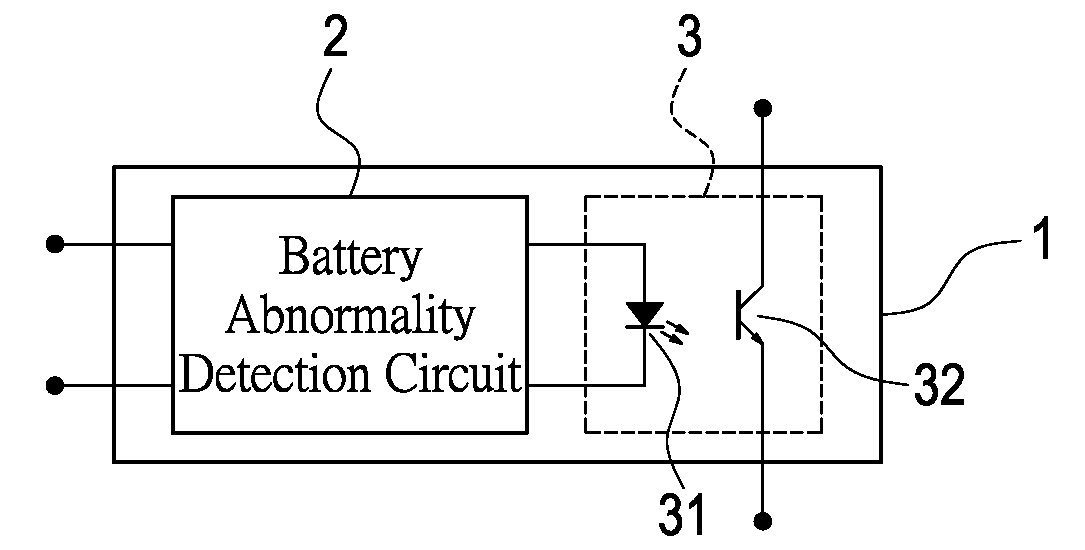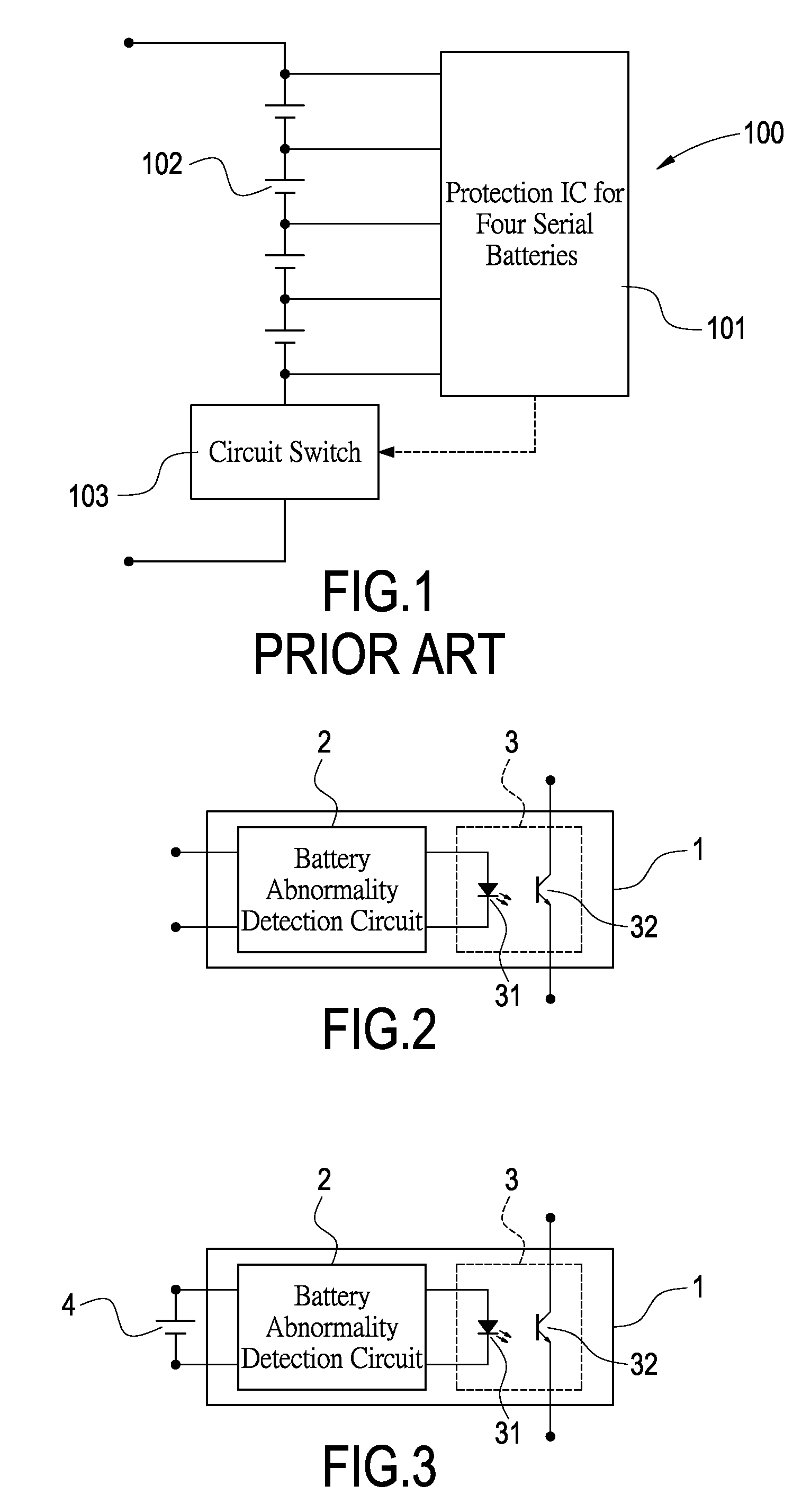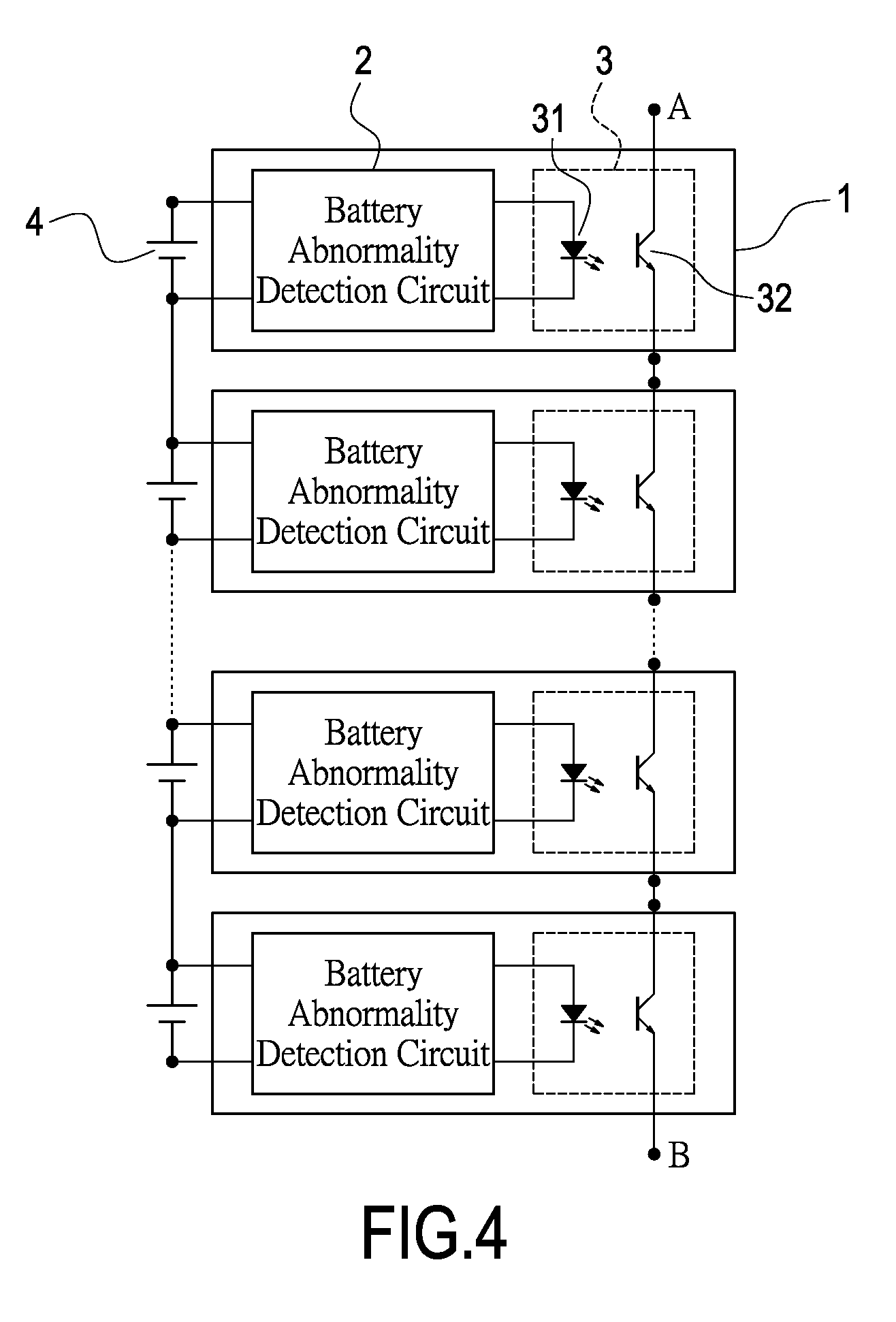Lithium-ion Battery Protection Method and Device
a technology of lithium-ion batteries and protection methods, applied in the direction of battery overcharge protection, safety/protection circuits, transportation and packaging, etc., can solve the problems of nimh batteries not being a perfect solution, cadmium is a heavy metal and environmental hazard, and poor adaptability to the environmen
- Summary
- Abstract
- Description
- Claims
- Application Information
AI Technical Summary
Benefits of technology
Problems solved by technology
Method used
Image
Examples
Embodiment Construction
[0022]FIG. 2 and FIG. 3 respectively show schematic of the parallelly connected module of the lithium-ion battery protection device and schematic of the parallelly connected module of the lithium-ion battery protection device connected in parallel with a battery according to a preferred embodiment of the invention. In the present invention, protection device 1 includes abnormality detection circuit 2 and light-coupling circuit 3.
[0023]Abnormality detection circuit 2 is to detect the voltage of rechargeable battery 4, and output a detection signal to light-coupling circuit 3.
[0024]Light coupling circuit 3 adjusts an impedance of the light coupling circuit 3 based on the detection signal so as to either break the connection between the protection device 11 and the externally connected circuit, or cause the rechargeable battery 4 to charge or discharge.
[0025]Preferably, light coupling circuit 3 includes an LED 31 (Light Emitting Diode) and a transistor 32. LED 31 is electrically couple...
PUM
 Login to view more
Login to view more Abstract
Description
Claims
Application Information
 Login to view more
Login to view more - R&D Engineer
- R&D Manager
- IP Professional
- Industry Leading Data Capabilities
- Powerful AI technology
- Patent DNA Extraction
Browse by: Latest US Patents, China's latest patents, Technical Efficacy Thesaurus, Application Domain, Technology Topic.
© 2024 PatSnap. All rights reserved.Legal|Privacy policy|Modern Slavery Act Transparency Statement|Sitemap



